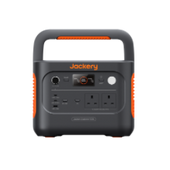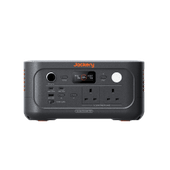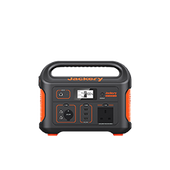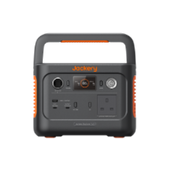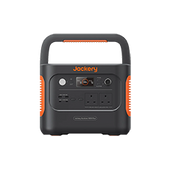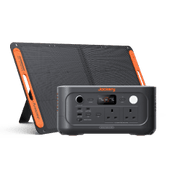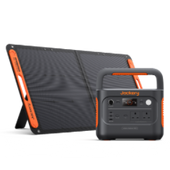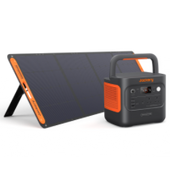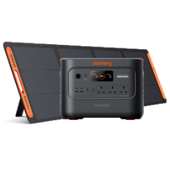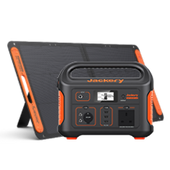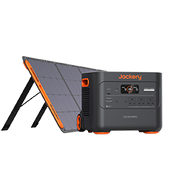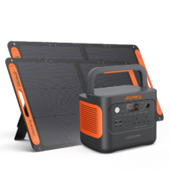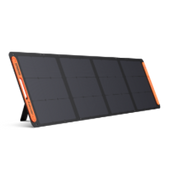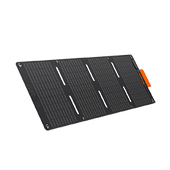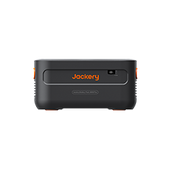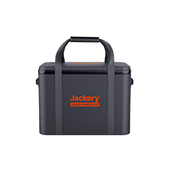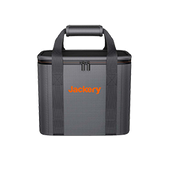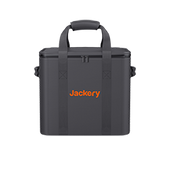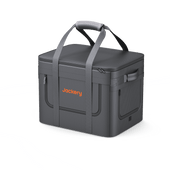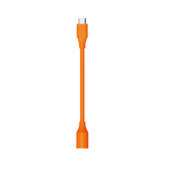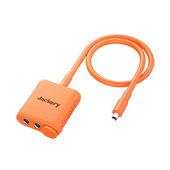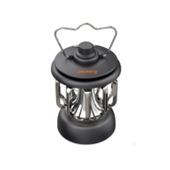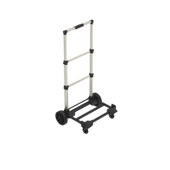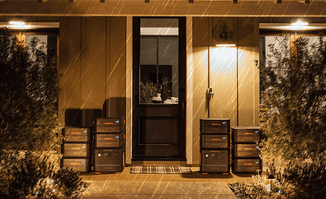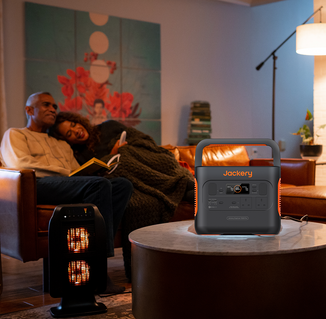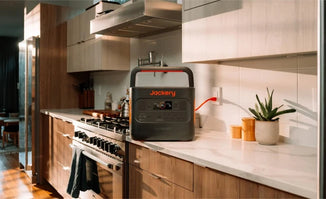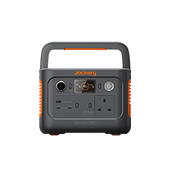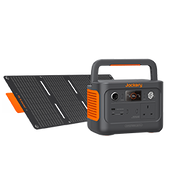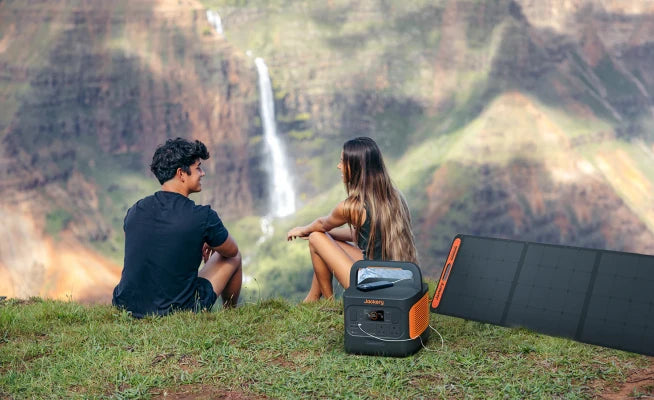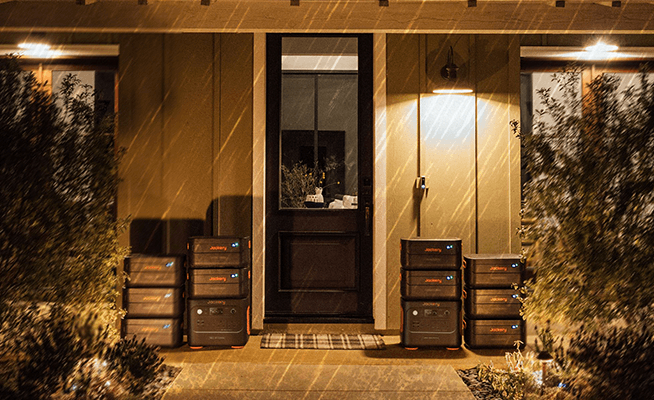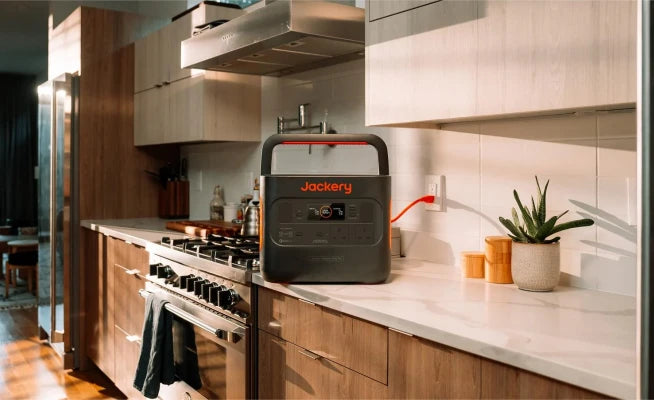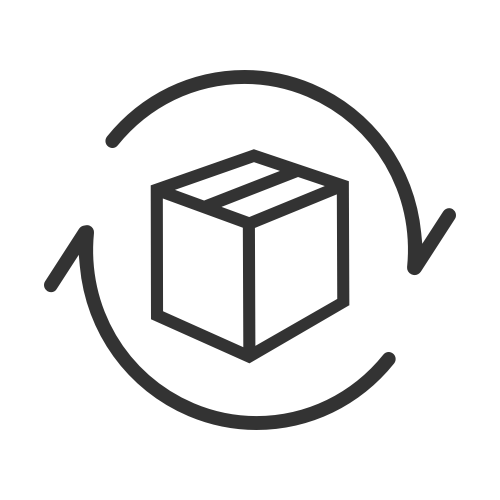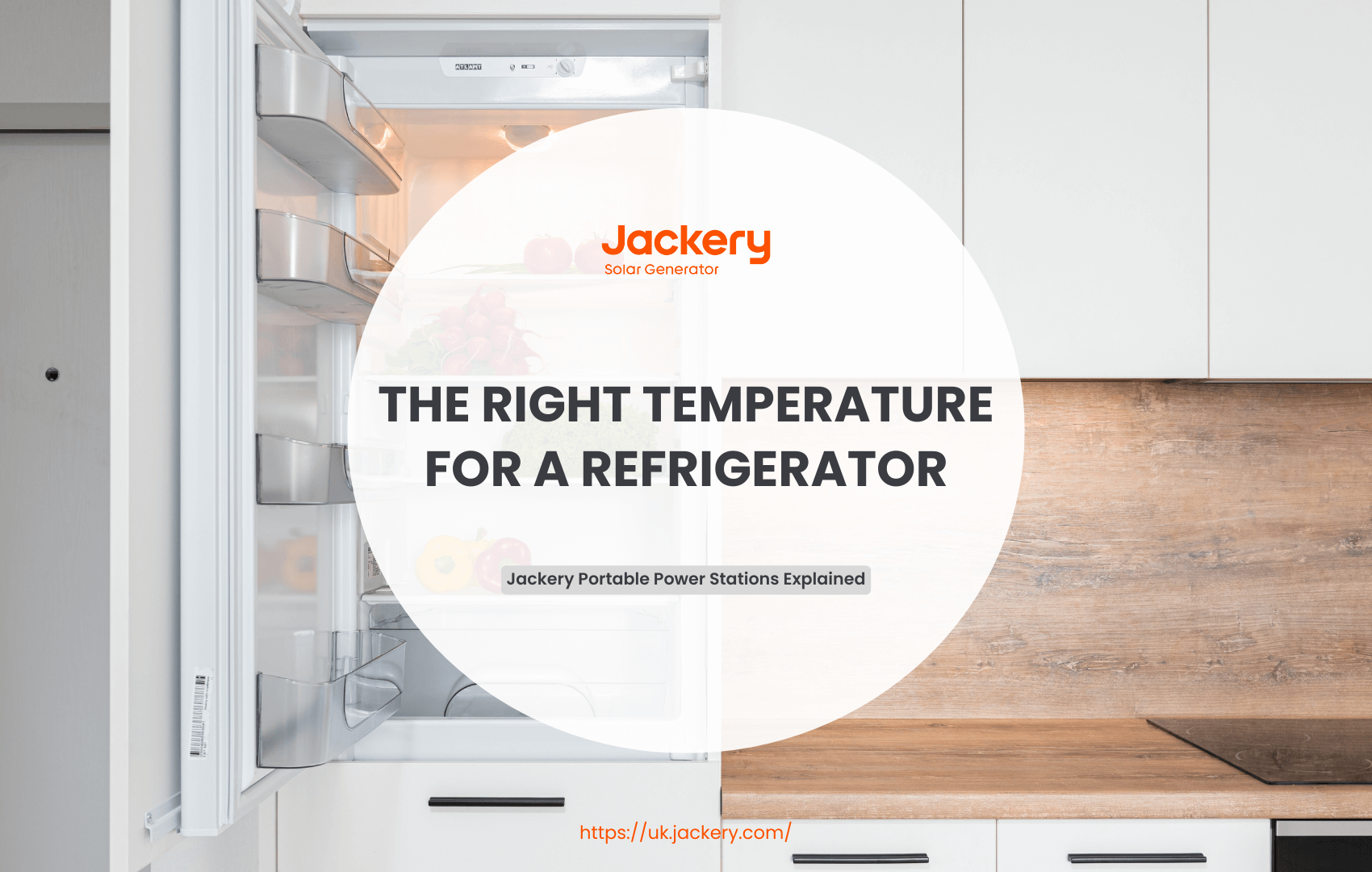The sudden silence of a power cut can be unsettling. In an instant, your weekly shop becomes a race against time. The contents of a full family freezer, worth £200–£400, are at risk. Losing it all is not just costly, but can also lead to illness from spoiled food.
The uncertainty is stressful. Is the meat still safe? Can the dairy be saved? This guide takes away the guesswork, giving you the know-how to protect both your wallet and your family’s health.
The Food Safety Danger Zone: Critical Temperatures to Know
Bacteria that cause food poisoning multiply rapidly within a specific temperature range. Understanding this "Danger Zone" is the first step in keeping your food safe.
● The "Danger Zone": The ‘Danger Zone’ for food safety is between 4°C and 60°C —Food stored in this range for more than two hours can become unsafe to consume.
● Ideal Freezer Temperature: -18°C or below is the ideal freezer temperature, which stops bacterial growth entirely.
● Safe Refrigerator Temperature: 4°C or below significantly slows bacterial growth.
● The Essential Tool: The only way to know the true temperature inside your appliance is by using an appliance thermometer; your senses are not a reliable guide.
How Long Will Food Stay Frozen? A Realistic Timeline
The answer to this depends on how full it is and whether you keep the door shut. A well-stocked freezer acts like an igloo, with the frozen items insulating each other.
● Full Freezer (door closed): Stays at a safe temperature for up to 48 hours.
● Half-Full Freezer (door closed): Stays at a safe temperature for up to 24 hours.
● Chest vs. Upright Freezers: Chest freezers typically retain cold longer than upright freezers because cold air is dense and sinks, so less of it escapes when the lid of a chest freezer is opened compared to the door of an upright model.
These timelines are estimates. The actual time your food stays safe is influenced by the appliance's efficiency, ambient room temperature, and frequency of door openings.
Your 3-Step Action Plan for a Power Outage
A clear plan removes panic and enables decisive action. Follow these three steps to manage your food supply effectively during and after a power cut.
How Can You Prepare Before an Outage?
The best way to handle an outage is to be ready for it. A few simple preparations can dramatically extend the life of your frozen food. For more tips, see our guide on how to prepare for a long-term power outage.
Install Appliance Thermometers
Place an inexpensive appliance thermometer in both your refrigerator and your freezer. This is the only way to accurately monitor temperatures and make safe decisions.
Increase Thermal Mass
An empty freezer thaws quickly. Fill any space with containers of water or gel packs. This frozen mass helps the freezer maintain its ideal freezer temperature for much longer. You can also pre-chill or freeze refrigerated items like milk and leftovers that you might not need immediately.
Prepare a "Go-Kit"
Have a high-quality cooler, frozen gel packs, dry ice, or block ice ready. This allows you to quickly transfer essential refrigerated items if the outage is expected to last more than a few hours.
What Should You Do During an Outage?
Once the power goes out, your actions in the first few hours are critical. Your primary goal is to preserve the cold air already inside your appliances. Our comprehensive guide on how to deal with a power cut offers further advice.
Keep Doors Closed
This is the single most important rule. Minimize opening refrigerator and freezer doors to maintain cold air. Every time you open the freezer or refrigerator door, you let cold air out and warm air in, accelerating the thawing process.
Consolidate Food
If your freezer is not full, quickly open the door once to group all the food tightly together in the centre. This creates a concentrated "igloo effect," where the items insulate each other and slow down thawing.
Use a Cooler for Refrigerated Items
For any outage lasting longer than 4 hours, move critical refrigerated items like milk, cheese, raw meat, and leftovers into the cooler you prepared with ice or frozen gel packs. Discard perishable foods if the refrigerator temperature reaches 4°C or above for more than two hours.
Consider Dry Ice
If you can obtain it safely, dry ice or block ice can significantly extend the holding time of your freezer. Place it on a piece of cardboard on top of your food. Always wear heavy gloves when handling dry ice to prevent frostbite and ensure the room is well-ventilated, as it releases carbon dioxide gas.

How Should You Assess Food After Power Returns?
When the power is restored, you must assess the safety of your food before consuming it. Do not rely on appearance or smell alone.
Check the Thermometer First
Your appliance thermometer is your most reliable tool. If the freezer thermometer reads 4°C or below, the food is safe to refreeze or cook.
Look for Ice Crystals
Visually inspect the food. If items still contain visible ice crystals or feel rock-hard, they can be safely refrozen. The quality, particularly texture and flavour, may be slightly diminished, but the food remains safe.
When in Doubt, Throw It Out
This mantra is crucial for food safety. Discard any perishable food (meat, poultry, fish, eggs, soft cheeses, milk) that has been above 4°C for two hours or more. It is not worth the risk of foodborne illness.
Never Taste Food to Determine Safety
You cannot taste, see, or smell the bacteria that cause food poisoning. Never taste a food to check if it has spoiled. Rely only on the temperature reading and the presence of ice crystals.
How Should You Prioritize Food to Reduce Waste?
During an outage, it's wise to prioritize which foods to consume first to minimize waste.
1. First: Foods requiring refrigeration, especially if the fridge temperature is rising.
2. Second: Defrosted frozen food that doesn't require cooking.
3. Third: Room-temperature canned, bottled, and dried foods.
For vulnerable groups, including young children, pregnant women, older adults, and those with compromised immune systems, exercise extra caution. Ensure high-risk foods are thoroughly cooked to steaming hot and strictly adhere to use-by dates.
Guaranteeing Your Food Stays Frozen
The steps above help mitigate loss, but they don't eliminate the risk. The only definitive solution to protect your food during a power outage is a reliable backup power source. A portable power station can run your refrigerator or freezer, completely removing any risk of spoilage.
This technology acts as your personal, silent power grid. It provides clean, stable electricity instantly when the mains fail, ensuring your essential appliances continue to run without interruption. For a full overview of options, explore our resources on emergency power supplies.
Recommended Power Solutions for Home Refrigerators
Choosing the right power station ensures your appliances have the energy they need to run for hours or even days.
Which is Best for Most Homes?
The Jackery Solar Generator 2000 Plus
● Expandable Capacity: Features a 2kWh capacity, expandable up to an incredible 24kWh with add-on battery packs, allowing you to customise runtime for your needs.
● Ultra-Fast Solar Charging: Recharges in just 2 hours with 6x 200W solar panels, creating a sustainable power loop during extended outages.
● Powerful Output: Can power a standard refrigerator (rated at 300W) for approximately 5 hours on a single 2kWh battery pack, with more time added with each expansion.
Which is Best for Larger Refrigerators?
The Jackery Explorer 3000 v2
● Massive Capacity: Boasts a large 3072Wh capacity, capable of powering a standard refrigerator (rated at 200W) for 24-48 hours on a single charge.
● Long-Term Reliability: Built with a durable LiFePO4 battery that offers a 10-year lifespan, ensuring it's ready for any outage for a decade to come.
● Ultra-Fast AC Recharging: Recharges from a wall outlet in just 1.8 hours, getting you back to full power quickly between outages or during intermittent power.
How to Choose the Right Jackery Model for Your Appliance
Selecting the perfect Jackery model is straightforward.
1. Check Appliance Wattage: First, you need to know how much power your appliance uses. Check the wattage (W) label on your refrigerator or freezer. This is usually on a sticker inside the door, on the back of the unit, or in the user manual.
2. Estimate Runtime: Next, you can estimate the runtime. Match your appliance's wattage against the Jackery model's capacity, measured in Watt-hours (Wh). A 3072Wh power station can run a 300W appliance for roughly 10 hours (3072Wh / 300W ≈ 10 hours).
3. Consider Solar Recharging: Finally, a key advantage is solar recharging. By connecting Jackery solar panels, you can recharge your power station during the day. This creates a truly sustainable, off-grid power loop for continuous operation during extended outages.
From Anxiety to Action
When the power goes out, your most important move is simple—keep the freezer door shut. It’s the easiest and most effective way to slow food spoilage.
Preparedness is the real key to avoiding the stress and cost of an outage. A little planning, paired with a reliable backup power source like a Jackery Solar Generator, turns worry into confidence—keeping your food safe and your family protected.
Frequently Asked Questions
Q1: Beyond food safety, are there other potential risks or considerations I should be aware of when my freezer thaws during an outage?
A: Significant thawing can cause water damage from melting ice, especially with upright freezers. Place towels or shallow trays at the base of your freezer to catch any leaks and protect your flooring.
Q2: What if I'm unsure about the exact wattage of my refrigerator or freezer, or it's not clearly labeled? How can I estimate it for choosing a power station?
A: Check the appliance's user manual, look for its Energy Star rating online, or use a simple plug-in device called a Kill-A-Watt meter. This meter will give you a precise measurement of its power consumption.
Q3: Can I use regular ice packs or bags of ice from the grocery store to help keep my freezer cold during an outage, or are frozen water bottles and gel packs better?
A: While shop-bought ice helps temporarily, frozen water bottles and reusable gel packs are more effective for sustained cold. They have a lower melting point and are reusable, making them a more efficient long-term solution.
Q4: If I have a generator for my home, how does that compare to using a portable power station like a Jackery for keeping my freezer running?
A: Traditional generators require fuel, are noisy, and produce harmful exhaust, making them unsuitable for indoor use. A Jackery provides clean, silent, and instant power with no fumes, making it a safer and more convenient choice for powering indoor appliances.
Q5: What are the signs that refrozen food might have significantly degraded in quality, even if it's still safe to eat, and how can I minimize this impact?
A: Signs include freezer burn (dry, discoloured patches), a mushy texture in vegetables, or dry, tough meat. To minimise this, use refrozen items in cooked dishes like soups, stews, or casseroles where texture is less important.



